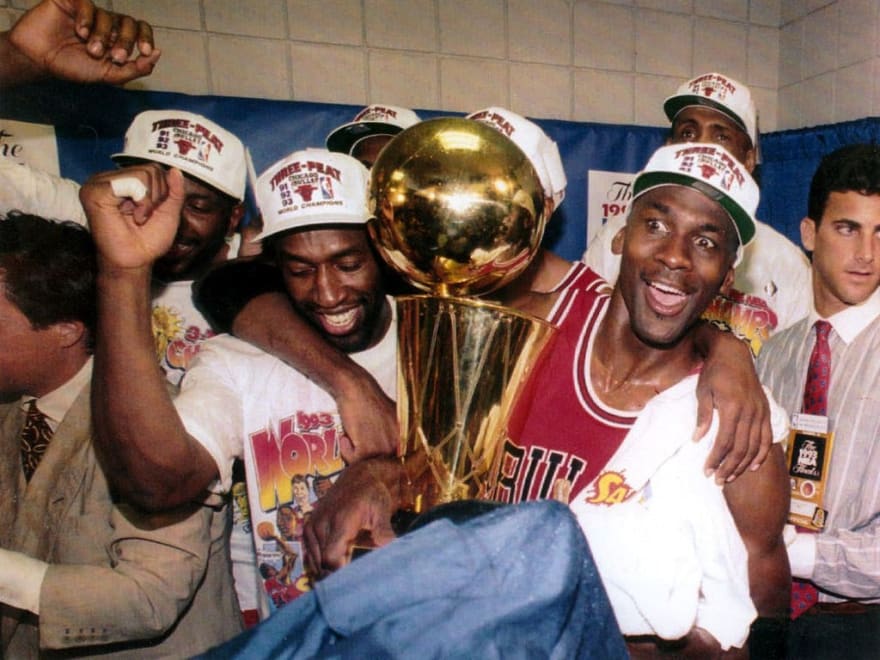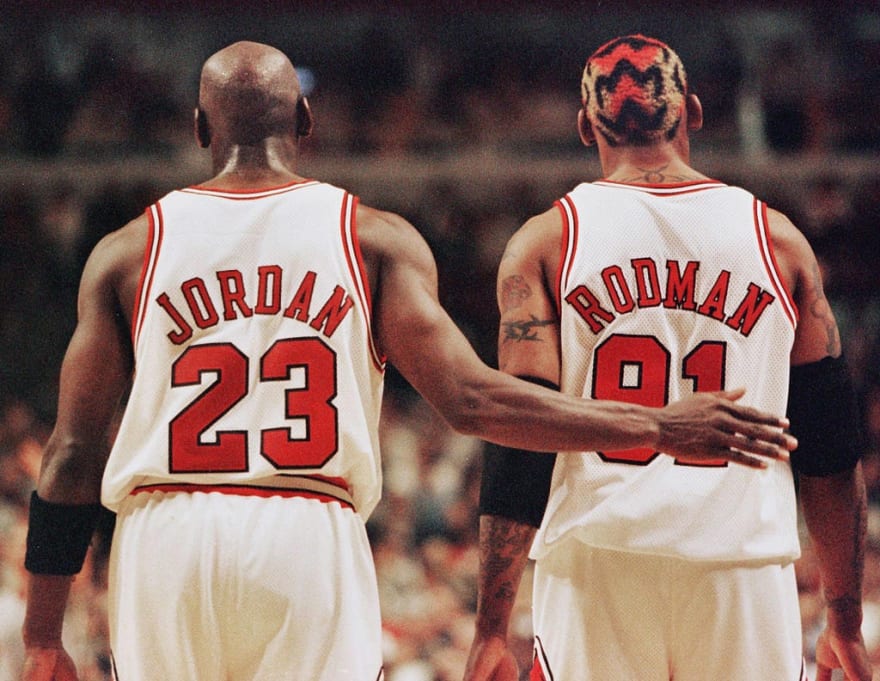Watching The Last Dance was an incredible experience, much more than watching Michael Jordan or specifically to sports - I treated this series as a team building tutorial.
So many team building and personal growth topics were raised there, I just found myself sitting after every episode and thinking on the episode's relevancy to my work as team lead and what I can learn from it.
tl;dr
This blog post is about taking lessons from The Last Dance and applying them to the engineering world.
I'll focus on the processes that took place in the Chicago Bulls that converted them from a great team to the best group of their time. A lot can be learned from the different approaches that the coaches took and the different behaviors of Michael Jordan that led to this improvement in the team's performance.
Comparing a basketball team with an engineering team
I’ll begin with doing a basic mapping (as I see it) between the series characters to an engineering org:
- The coach (Phil Jackson and Doug Collins before him) — the team lead
- Michael Jordan — a senior engineer
- The rest of the Chicago Bulls team — non-senior engineers in the team
- Jerry Reinsdorf and the rest of the Chicago Bulls mgmt — different stakeholders, “upper management”
- The fans and the crowd — customers
Now that we have this comparison in mind we can begin with the real fun :)
The team lead’s approach to winning
The coach/team lead have a lot on their minds:
- Satisfying all stakeholders inside the organization — bringing money in by winning/selling
- Satisfying the fans/customers in the long term
- Satisfying the team itself — personal growth, ego, salaries
- Satisfying themselves — let’s not forget that the coach/team lead wants to develop and enjoy as well
Let’s compare the two approaches of the two coaches in the series:
Doug Collins — win by maximizing reliance on Michael Jordan
Doug Collins was a coach that brought great results to the team by putting all the focus on Michael Jordan, all the game moves and tactics were built on Michael Jordan’s abilities. This is an example to a team lead that puts the weight of the team’s ability to deliver only on the senior engineers in the team:
- Difficult and complicated tasks are assigned to the senior engineers
- The non-senior engineers’ purpose is to let the senior engineers run fast and deliver
This made the Chicago Bulls a great team because they had one hell of a senior engineer :) but they could not win the championship. There are a lot of disadvantages to this approach:
- The team’s ability to deliver is equal to the senior engineers’ ability to deliver
- The ability to improve is equal to the ability of specific senior engineers to improve
- This is not scalable and relies too much on too few people in the team
- The non-senior team members do not improve, this approach perpetuates the current “snapshot” of the team — the seniors will stay seniors, the non-seniors will not be promoted.
So even though the results were good, they were not great. Remember all the concerns team leads have on their minds? this approach led to unsatisfied internal stakeholders (not winning the championship), unsatisfied fans/customers (not winning the championship => the product quality was limited and did not improve), unsatisfied team (they were all a shadow of the senior engineer with no future to be seniors themselves), which makes the team lead itself unsatisfied — and who can blame them, how can you be satisfied when everyone around you is not?
Phil Jackson — win by maximizing the team performance
Phil was hard to process for the team, he arrived with a completely different approach which turned upside down the way the team behaved so far.
The discussions and plans moved from “what can we do to make Michael Jordan score?” to “what can we do to win in the long term?”. This is a huge difference that made the real change in the group.
Phil put emphasis on team building, made everyone focused on the target of winning and to rely on each other. “There is no I in team”.
Phil was a true inclusive leader, fostering collaboration (reducing the bus factor) and not necessarily hiring new team members for their resume but their ability to complement the team.
After some adaption time there was a huge difference in the team performance that led to winning the championship. All the disadvantages from before disappeared:
- The team’s ability to deliver is equal to the entire team’s ability to deliver
- The ability to improve is equal to the entire team’s ability to improve
- This is as scalable as it can get — it relies on everyone in the team
- The non-senior team members improve because the senior team members push them to excellence
This approach makes the stakeholders, fans/customers and the team satisfied.
When you put weight on the long term goal and make sure everyone on the team improves you get the best outcomes. Focusing on one person or on short term goals (winning only the next game and not the next seasons) doesn’t get you to your maximum. No shortcuts here.
The role of the senior team member
Doug Collins believed that the senior engineer’s responsibility is to bring success by leading the team and carry it forward.
Phil Jackson believed that the senior engineer’s responsibility is to bring success by pushing the team to excellence “from behind”, being a servant leader that defines success by the team’s success and not by personal success.
Phil: There is no I in team
Michael: But there is an I in win
This is a conversation that blew my mind, it shows so clearly the difference between the two approaches. The problem is they are both right :) It took time for Michael Jordan to understand that there is indeed an I in win, but it had a different meaning than what he used to think.
Michael Jordan was a critical senior engineer in the team’s success:
- He pushed the other team members to excellence during practices. He expected them more, pushed them to be better. He had high expectations of them
- He pushed the other team members to excellence during games
- He helped the team to stay focused when their spirit took a hit. Michael could stay focused and perform even when they were losing, and this approach led others to play accordingly
During their time under Phil’s leadership, the best time this group has ever had, Michael wasn’t the only scorer, the game tactics did not focus on Michael, and it took him time to process it. There is really no I in team.
When Michael saw the results of this new approach he was convinced that there is definitely an I in win, but only as part of a team.
The series demonstrated so well the most effective way we can define the senior engineer role:
- The senior engineer’s success criteria is the team’s performance and not just their personal performance
- Improve yourself by making others better — don’t be frustrated if the there is a gap of knowledge between yourself and the team, see it as an opportunity of personal growth and have high expectations from your team mates
Living in a roller coaster
Basketball/engineering team’s life is like a roller coaster, you sometimes get super high after a win and sometimes get depressed by a devastating loss. It is hard to create a strong team spirit like that, and I found the way the Chicago Bulls coped with it very interesting and we should all apply it to our engineering teams:
- Celebrate successes
- Learn from mistakes
- Anyway, either after a win or a loss — stay focused
Every topic here should not be underestimated, it is a crucial part of forming a healthy team culture and identity while keep focusing on the right direction.
Summary
In case you did not watch The Last Dance from an engineering standpoint — I encourage to do it :)
Hoped you enjoyed my take on the series!
Originally published at https://shaimendel.dev.








Top comments (0)